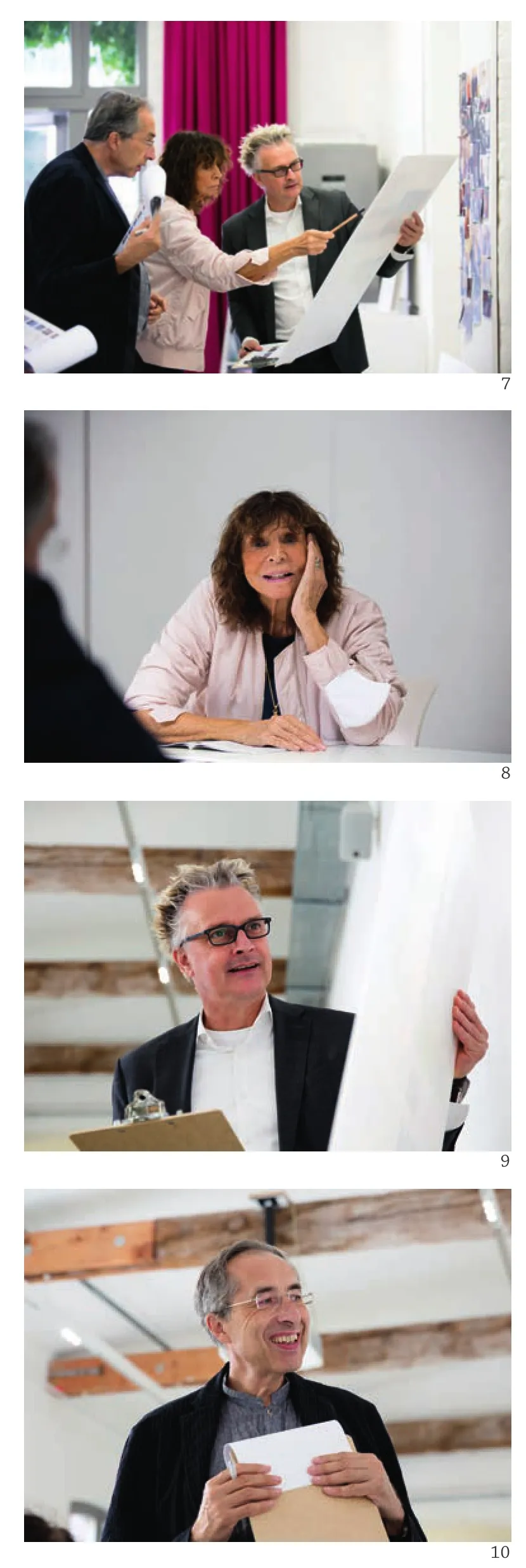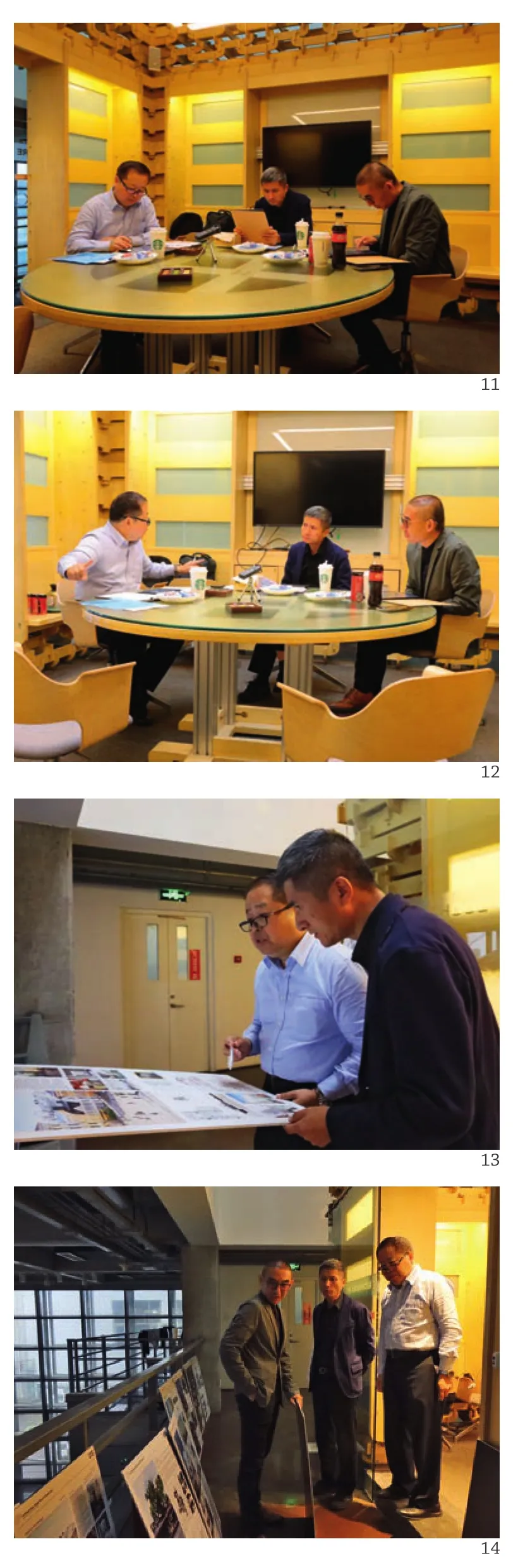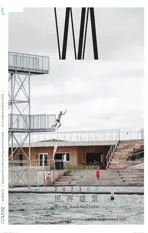评委感言
2021-01-26
曹嘉明
中国建筑学会副理事长,上海市建筑学会理事长
世界未来城市计划是一个非常好的奖项,因为通过这个奖项,人们可以用一种前瞻性的眼光来看待未来城市的发展,以及建筑今后的扩展,它针对人们的行为反馈提出了新的诉求。建筑实际上是历史的反映,所以任何建筑和城市设计一定会有明显的时代性和地域性。地域性会反映在两个方面:一是气候特征,二是文化传承。我们在讨论世界未来计划的同时,实际上更关注的是前瞻性。前瞻性会体现在时代性上,也会体现在各个不同的地区、不同的层次和不同的建筑面貌上。
城市和建筑都应该被视为有生命的有机体,它一定在不断更新的过程当中,有它过去的历史和它发展的未来,在这两者之间,我们怎么能够更好地衔接,是我们思考的问题。根本的问题还是应该关注人的行为,从人本的角度出发,思考城市的发展。
这一次的评审过程当中涌现了许多非常好的建筑,不仅设计非常有个性,而且融入了城市环境之中,更多地给城市的人们以相互交往的空间,对城市的发展是有贡献的。这就是我们在世界未来城市计划评审中非常注重的一个方面。
克里斯汀·菲莱斯
柏林AEDES建筑总监,2013-2017普利兹克奖评审团成员,2012年威尼斯建筑双年展国际评审团成员
首先我想说,第二次参加评审,我非常高兴,看到这些项目也非常令人激动。我们仔细看了所有作品。我认为很棒的一点是,参评的项目来自世界各地——黎巴嫩、非洲、德国等等。此次提交的项目数量也变多了。这非常好,说明了这个奖项的重要性。我想说的第二点是,在此次评审过程中我感觉到,很多项目不仅是在创造伟大的建筑,也是在处理空间与人的关系。其中的很多项目都在试图改善人们的生活品质,无论它们处在城市环境之中,还是城郊地区。同样有趣的一点是,一些建筑师很有勇气,向我们发来村庄中的非常小的项目参评。比如有些项目使用本地材料在村庄中建造一个供所有人交流、集会的地方,这对于人们的沟通与生活而言是非常有益的。类似的想法还体现在其他不同层次的项目中。(母卓尔 译)
李存东
中国建筑学会秘书长
世界未来城市计划非常重要,甚至比以往更重要。我们知道现在很多国际交流因疫情的关系受到不同程度的影响。我们也在试图拓展我们的交往手段和途径,比如线上交流等等。作为专业方面的交流,世界未来城市计划这个奖项给我们提供了更加有效的专业间沟通的平台。今年有80份参评作品,来自25个国家,我们虽然没有机会与各个项目的建筑师见面,但是我们能够通过这些作品感受到在当下环境中,不同国家、不同地域、不同文化背景下,建筑师所产生的一些建筑思考。这些建筑作品之间实际上是有交融的。世界未来城市计划能够收集这么多的作品在一起,本身就是一种文化的交流,还带来另一种更加学术的、对未来有思考的交流。我觉得它的意义与当下非常契合。
未来的城市将更加积极、更有活力。因为现在,尤其是疫情后期,人们需要健康的环境,需要更加积极的心态。如果一个城市可以通过建筑、环境改造,给我们带来积极、向上、健康的心理预期,这是未来城市应该给我们的一种状态、一种期望,也是大家所希望的。
世界未来城市计划的作品应该跟城市的活力、积极性、健康意义有所呼应。今年很多作品其实都非常好,选出很少的项目也比较难。我更倾向于3个方面:第一,作品本身要有一定的创意,有创新性,应该有一种情理之中、意料之外的张力,包括它在城市之中所扮演的角色;第二,建筑本身,尤其在当下环境中,不应该只考虑其本身的功能及其建筑属性应该提供的应对,它应该对环境有更加积极的作用,为城市的活力贡献自己的力量,它应该对环境非常友好,能够吸引人,愿意跟人互动,能够实现交互式体验;第三,它还应该具备一定的社会意义,比如能够促进人的身体健康或者心理健康。有一些作品有它的社会意义,我们应该关注到,而且也鼓励这样的作品能够更多地出现。
鲍里斯·沙德-宾索夫
《建筑世界》主编
未来我们必将面临一些不同的挑战。我们的工作方式和移动方式将会发生改变,在城市环境中乃至世界范围内的可移动性也根本地改变了。我们必须以前所未有的全新方式改善建筑和城市设计。因此,我确信建筑和城市规划应当比我们过去所设计的要更加灵活、更具韧性。这就是我们寻求灵活的结构、灵活的建筑的原因。这一切都会在以人体尺度为衡量标准的面向未来的设计中得以体现。(徐紫仪 译)
谢尔盖·卓班
BDA建筑师,Tchoban Voss Architekten合伙人,俄罗斯艺术学院荣誉会员
今天我注意到,与10年、15年前相比,建筑要回答的问题已经完全不同了。过去10年、20年的传统城镇与传统城市发展中的密度与公共空间的问题,已经与今日大不相同。现在,公共空间及不同功能的结合已经发生了很多改变。我们这次看到的和讨论的项目,向我们展示了将旧的物质、工业的物质、公共空间、不同层级的使用者、不同层级的建筑以及自然环境相互融合起来是多么重要。同样重要的是,要跳出对城镇、城市空间的传统理解,创造出不同以往的可持续的路线,提出全新的想法,展示全新的图像,创造我们心中的未来城市空间的原型。(母卓尔 译)
张利
清华大学建筑学院院长、教授,清华大学建筑设计研究院副总建筑师,中国建筑学会常务理事,《世界建筑》杂志主编
关于世界未来城市计划,很重要的一点就是,它不再关注单体的建筑,这是它与其他设计奖项有很大区别的地方。其实现在有很多的奖项都开始关注人和空间之间连接的这一部分,我想世界未来城市计划关注的也是这样的内容。它有一个很重要的意义,就是在维持我们生活的基本尊严的前提下,如何用创新的技术、创新的理念,来大胆地定义、实验新的生活方式。
城市文明的历史是由“聚居”发展出来,逐渐累加、逐渐演进的进程,人的尊严、人的理想、人的生活意义,因为和更多的人、更高密度地居住在一起而得以加强,同时人的智慧因为和其他人的交流也得以提升。我想世界未来城市计划本身不会改变城市文明史的进程方向,而应该在我们现在特殊的历史环境下,也就是在现在特殊的技术和社会观念下,进一步地加强这个进程。
CAO Jiaming
Vice President, the Architectural Society of China(ASC)/President, the Architectural Society of Shanghai China (ASSC)
I think International Urban Project Award(IUPA) is a prominent award, because through this award, people can look at the future urban development and future expansion of architecture with a forward-looking vision. It puts forward new appeals based on the feedback of people's behaviours. In fact, architecture is a reflection of history, so any architecture and urban design must have an obvious locality. It would be reflected in two aspects: one is the climate, the other culture.Therefore, when we are discussing IUPA, what we are more concerned is the prospective vision. In other words, it would be suggested by its age, as well as by its region, level and different architectural features.
Architecture and city should be seen as a living organism which is always in the process of continuous renewal. It has its past and its future,between which is what we are considering to better connect each other. The fundamental issue is that we should pay attention to human behaviour and consider the urban development from a humanistic perspective. This time in the jury meeting, there are many excellent projects which provide people in the city with more space to communicate with each other, contributing to the development of the city.This is a very important part of our review of IUPA.(Translated by PANG Lingbo)
Kristin Feireiss
Director, AEDES, Berlin/2013-17 Member of the jury of the Pritzker Architecture Prize/2012 Member of the international jury for the Architecture Biennale in Venice
First of all, I have to say, it was not only a great pleasure to join this jury for the second time,and it was also a very exciting experience to see all these projects. And we were looking at all of them very carefully. And first of all, it is wonderful that there are projects from all over the world -from Lebanon, from Africa, from Germany, from nowhere, whatever. This is good because it shows,also it is a rising number of projects submitted,and how important this prize is. The second is that this time, many of these projects has to do not only with great architecture, but definitely with human beings. They show us, most of the projects to rise up the living quality of everybody wherever they live - in urban environment, in rural places, little villages. What I also found interesting, and I think somehow courage of the architect to send us very small projects in villages. For example, to use the local materials to build in the middle of little town a place for communication, a meeting point for this village, which I did not have before, and it was wonderful for the communication and the living of these people. And this you can find in all levels.
LI Cundong
Secretary-General, the Architectural Society of China (ASC)
In my opinion, International Urban Project Award (IUPA) is very important, and it has been more important than ever. We all know that many international exchanges have been affected to varying degrees due to the COVID-19. We are trying to expand our communication approaches and tools,such as online meetings and so on. As a professional exchange, IUPA provides us with a more effective way to communicate between professionals. It has 80 projects from 25 countries for 2020. Although we did not have the opportunity to meet with architects of these projects, we could also experience the architectural works of different countries, different regions and different cultural background produced by them in the current situation. These works are actually intermingled. The fact that IUPA is able to attract so many works is itself a cultural exchange.It also leads to another kind of more academic, and more future-oriented communication. I think it is very relevant and very important.
The city in the future will be more positive and more dynamic. Right now, especially in the post-pandemic era, people need a healthy environment as well as a more positive attitude. If a city can bring us a positive, upward and healthy psychological expectation through its buildings and its environmental transformation, I think this is a state the future city should give us and it is also what everyone hopes.
The projects that win IUPA should response to the vitality, initiative and health significance of the city. Many projects of this year are actually very excellent and thus it is hard to select a few. I set three priorities to evaluate the project: firstly, the work itself should be creative and innovative and there should be a kind of tension that is reasonable and unexpected, including its role in the city.Secondly, the building itself, especially in the current context, should not only contain its own functions and but also respond to its surroundings and play a more positive role in the built environment and contribute to the vitality of the city. It should be environmental-friendly, attractive, and interactive. Thirdly, it should also have certain social signi ficance, such as promoting people's physical or/and psychological health. Some of the projects have their social meanings that we should be aware of and encourage more to appear in the future. (Translated by PANG Lingbo)
Boris Schade-Bünsow
Editor-in-Chief,Bauwelt
In the future, we have to face some different challenges. The way we work and the way we move will change, the mobility on urban structures and in the world context as well will change fundamental.We have to improve architecture and urban design in a very new way than we did it before. So I do believe architecture must be more flexible, more resilient than architecture and urban planning we designed before.That is why we are looking for flexible structures, and flexible architecture. All together comes along with a human-scale approach in future-oriented design.

1-6 采访视频
Sergei Tchoban
Architect BDA/Partner, Tchoban Voss Architekten/Honorary member of the Russian Academy of Arts So what I notice today is that architecture has to answer completely different questions, with completely other questions, I suppose, even for 10 or 15 years. So if in the traditional town, or in the traditional urban development, we had for 10,20 years, the questions of traditional density and public spaces remain. So now the mixture between public space and different functions become completely achiered. And I think the projects that we have seen now and had discussed about,they show how important it is to involve the old substance, the industrial substance, the public space, different layers of people, different layers of building and natural surrounding into each other,and to create completely other sustainable route,which has absolutely nothing to do with traditional understanding of what is a town, what is an urban space, but to create the very new proposals, very new pictures, and prototypes for what we hope for the future urban space.
ZHANG Li
Dean of School of Architecture, Professor at Tsinghua University/Deputy Chief Architect,THAD/Standing Council Member, Architectural Society of Shanghai China (ASSC)/Editor-in-Chief,WAmagazine
One of the significant differences International Urban Project Awards (IUPA) has from many other design awards is that, it does not focus on single buildings any longer. In fact, many awards nowadays also start to concern the interaction between human and space. IUPA does the same. It has an important connotation, which is to boldly de fine and experiment new ways of life with innovative technologies and ideas with the priority of maintaining the dignity of our life.
Actually, the history of urban civilisation is a process of gradual accumulation and evolution based on human habitat in which people's dignity,ideals and life meanings are enhanced by living at a higher density. Human's intelligence is enhanced by communicating with others as well. I do not think IUPA will change the direction of history of urban civilisation, but under the unique historical background - i.e. today's unique technology and social concepts, to strengthen it further.(Translated by PANG Lingbo)

7-10 柏林评审现场(摄影/Photo: Jasmin Schuller)

11-14 北京评审现场(图片来源/Sources: CADE)
